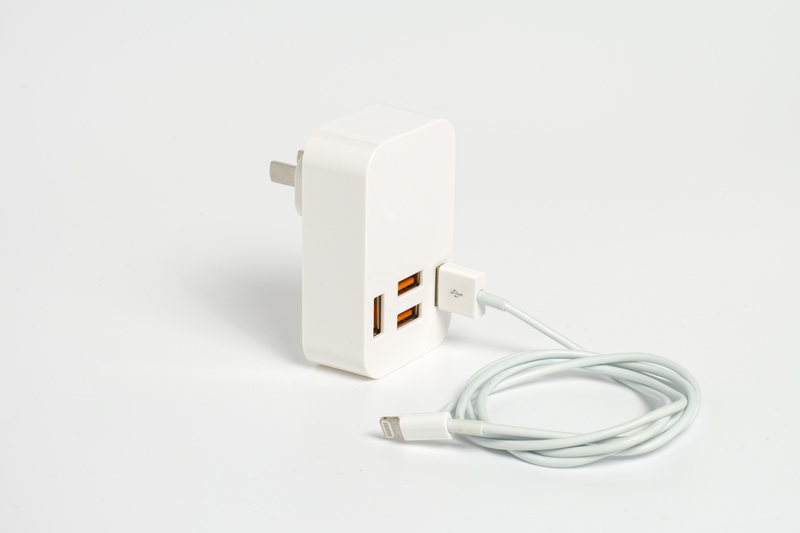Discover the Art of Packing for a Hassle-Free Move
Posted on 20/06/2025
Discover the Art of Packing for a Hassle-Free Move
Moving to a new home marks the start of an exciting chapter. However, the process of packing and relocation can be daunting if not approached strategically. The secret behind a successful, hassle-free move lies in mastering the art of packing. In this comprehensive guide, you'll uncover expert tips and methods that will turn packing into an efficient, stress-free process.
Why Proper Packing Matters for a Smooth Move
Whether you're moving across the city or to another country, packing efficiently plays a pivotal role in ensuring your move remains hassle-free. Disorganized packing leads to misplaced items, damaged belongings, and unnecessary expenses. On the other hand, a well-executed packing strategy saves time, minimizes stress, and guarantees your possessions arrive safely.
- Reduces moving stress and confusion.
- Protects fragile and valuable items.
- Saves time during both packing and unpacking.
- Prevents unnecessary moving costs and loss.

Start Early: The Foundation of Stress-Free Packing
Procrastination is the enemy of an organized move. Begin the packing process at least four weeks before moving day. Early preparation offers you ample time to sort through your belongings, obtain packing materials, and pack gradually, reducing the risk of last-minute chaos.
Set a Realistic Packing Timeline
- Four weeks before: Begin decluttering and packing rarely used items.
- Three weeks before: Pack out-of-season clothes, books, and decor.
- Two weeks before: Focus on kitchenware, linens, and less essential electronics.
- One week before: Finish packing everyday items, keeping only essentials for the final days.
Tip: Use a checklist to monitor your progress and ensure nothing gets overlooked.
The Decluttering Step: Only Pack What You Need
Every move offers a golden opportunity to declutter and lighten your load. Go through each room and sort items into categories:
- Keep: Essential or sentimental items.
- Donate: Clothing, toys, or household objects in good condition.
- Sell: Valuable items you no longer require.
- Discard: Anything broken or unusable.
This vital step allows you to save time, reduce moving costs, and start fresh in your new space with only the items you truly value.
Gather High-Quality Packing Supplies
Secure, reliable packing materials are essential for a hassle-free move. Subpar supplies increase the risk of damage and disorganization. Gather the following essentials:
- Sturdy moving boxes in various sizes
- Packing tape (industrial strength)
- Bubble wrap and/or packing paper for fragile items
- Stretch plastic wrap for furniture and drawers
- Markers and labels for easy identification
- Ziploc bags for small or loose items (e.g., hardware, screws)
- Specialty boxes for dishes, glassware, wardrobe items, and electronics
Remember: Investing in quality supplies is a small price to pay compared to the value of your belongings.
Room-by-Room Packing: The Smart Approach
Instead of randomly filling boxes, apply a structured, room-by-room method. This technique leads to better organization and smoother unpacking at your new home.
1. Pack One Room at a Time
- Start with storage spaces (attics, basements, or garages) since they're used the least.
- Continue with guest rooms and seldom-used areas.
- Leave kitchens and bedrooms toward the end, as you need them until moving day.
2. Label Everything Clearly
The art of packing well includes clear, detailed labelling. Mark each box with:
- Room destination (e.g., "Kitchen" or "Master Bedroom")
- Contents summary (e.g., "Pots & pans" or "Winter coats")
- Special handling instructions (e.g., "Fragile" or "Heavy")
This ensures movers and family members know exactly where each box belongs, reducing confusion during unpacking.
3. Use the Right Box Sizes
- Heavy items go in smaller boxes (books, tools) for easier carrying.
- Lighter, bulky items fit best in larger boxes (clothes, linens, pillows).
Do not overload boxes -- it's better to have more manageable, lighter boxes than risking breakage or injury.
Expert Packing Techniques for Every Item
How to Pack Fragile and Valuable Belongings
- Wrap each item individually with bubble wrap or packing paper.
- Fill empty spaces in boxes with crumpled paper or towels to prevent shifting.
- Use dish packs or specialty boxes for dishes, glasses, and collectibles.
- Mark boxes as "Fragile" in bold, visible letters.
Packing Clothes and Wardrobe Effortlessly
- Use wardrobe boxes to keep clothes on hangers.
- Roll t-shirts, jeans, and casual wear to save space and reduce wrinkles.
- Suitcases and duffel bags can double as packing containers for clothes or shoes.
Properly Packing Electronics and Cords
- Keep original boxes for the best protection, or use sturdy boxes with ample padding.
- Photograph cable setups before disconnecting for easier reassembly.
- Store cords and remote controls in labelled bags, taped to the corresponding device.
Protecting Furniture and Large Items
- Disassemble furniture if possible -- keep screws in labelled, attached bags.
- Wrap couches, tables, and dressers with stretch wrap and moving blankets to prevent scratches.
- Protect mattresses and box springs in specialized covers or thick plastic sheeting.
Make an Essentials Kit for the First Night
Imagine arriving after a long day of moving and rummaging through boxes for pajamas or toothbrushes. Prepare an "essentials box" with all items you'll need for the first night and day at your new home. Include:
- Pajamas and a change of clothes
- Toiletries (soap, toothpaste, medications)
- Phone chargers and small electronics
- Basic kitchenware (plates, cutlery, coffee maker)
- Cleaning supplies, toilet paper, and paper towels
- Bedding and towels
- Favorite snacks and bottled water for move-in energy
Label this box clearly and keep it with you, not on the moving truck.
Efficient Packing Can Save You Money
By packing smartly and only moving items you truly want, you may reduce the overall weight and space required -- two major cost factors for professional movers. Well-organized boxes lessen the time movers (or helpers) spend on your move, which can lower your bill. Efficient packing equals a more affordable, hassle-free moving experience.
DIY Moving vs. Professional Movers: Packing Considerations
- DIY Movers: Take full control of the packing process. Double-check box weights, and ensure you have helping hands on moving day.
- Professional Movers: Some offer packing services. If your budget allows, this option saves you time and provides peace of mind, as experts handle your belongings with care.
Common Packing Mistakes to Avoid
- Procrastinating and packing at the last minute: This results in rushed, haphazard packing and forgotten items.
- Overloading boxes or using weak boxes: Risk injury and damage to items or the people moving them.
- Failing to label boxes clearly: Leads to confusion and lost time during unpacking.
- Neglecting to protect fragile or high-value items: Always use proper wrapping and padding for breakables.
- Forgetting about essentials: Always keep daily necessities accessible.
By being aware of these pitfalls, you can ensure your move is hassle-free from start to finish.
Eco-Friendly Packing Tips
If you're mindful of the environment, employ sustainable packing options:
- Reuse boxes from local stores, friends, or online community groups.
- Use towels, linens, and clothing as padding instead of disposable materials.
- Opt for recyclable or biodegradable packing supplies when possible.
- Return or recycle boxes after your move -- many moving companies accept used materials.
Unpacking: The Final Step Towards a Stress-Free Move
The art of packing for a hassle-free move also includes effectively unpacking upon arrival. Start with the essentials box, then proceed room by room -- starting with bedrooms and the kitchen. Match boxes to their labelled destination so you can take your time organizing each new space to your liking.
Tips for Unpacking Quickly and Efficiently
- Set up beds and basic kitchen items first for comfort
- Organize as you unpack to prevent creating clutter
- Break down boxes immediately to free up space
- Use your checklist to ensure all items have arrived and nothing is missing
Your Moving Success Starts with Smart Packing
Packing does not have to be a dreaded chore. With preparation, practical steps, and a positive mindset, you can transform the moving experience into a smooth and even enjoyable process. Discover the art of packing for a hassle-free move by applying these expert tips, maintaining organization, and valuing only what you truly need. As you turn the key to your new home, you'll thank yourself for a job well done.
If you're planning a move soon, bookmark this guide for reference. Share it with friends and family who may need a little moving magic, too!

Frequently Asked Questions About Hassle-Free Packing
How early should I start packing before my move?
Begin at least four weeks in advance for a hassle-free move. This leaves ample time for decluttering, gathering materials, and packing each room methodically.
What are the must-have packing materials for a safe move?
Quality moving boxes, packing tape, bubble wrap or packing paper, stretch wrap, labels, markers, and bags for small items are essential to prevent damage and loss.
Is professional packing worth it?
If you have a busy schedule, complex move, or fragile items, investing in professional packing services can save you time and give you peace of mind.
How can I make unpacking easier?
Label boxes clearly, keep essentials handy, and unpack one room at a time. Set up beds and the kitchen first for immediate comfort.
Conclusion
The art of packing is your ticket to a stress-free, successful move. With purposeful planning, quality supplies, and thoughtful organization, you'll protect your belongings and gain peace of mind. Implement these expert strategies and discover firsthand how a smart, hassle-free move begins and ends with the way you pack. Happy moving!









